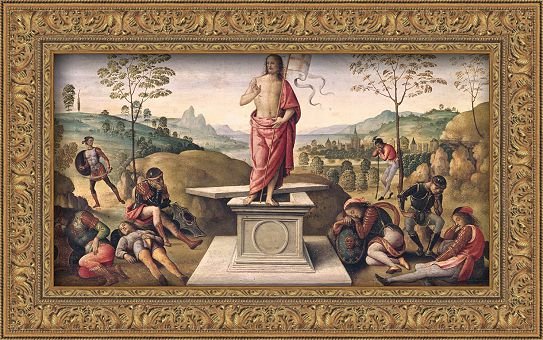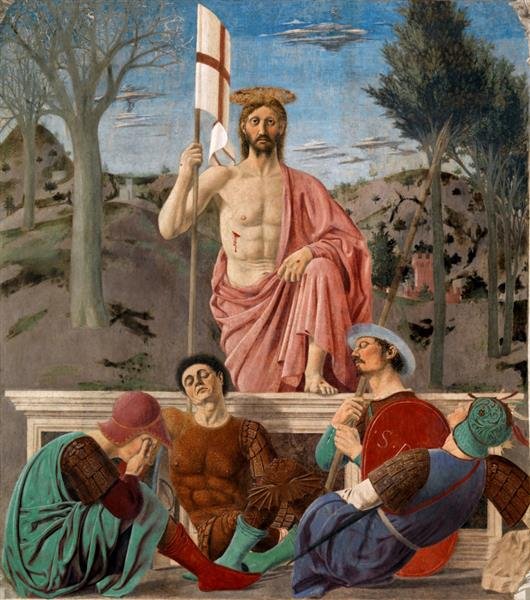
Resurrection and presence of the living Christ
Resurrection and the presence of the living Christ: the church’s experience of Christ is not limited to what happened during his three years of ministry on earth. Throughout the New Testament, it is quite evident that the resurrection of Jesus from the dead played a very important role in the formation of the belief in his divinity. Of course, resurrection from the dead in itself is not a proof of divinity. Christians believe that on the Day of Judgment, all true believers of God will also rise from the dead and enjoy a glorified body like the body of Christ. And this, of course, does not mean their divinity. But the resurrection of Jesus is closely related to the belief in his divinity in two ways. First, the resurrection event itself confirmed the claims of Jesus and his teachings. Considering that the Jewish leaders considered the claims of Jesus as blasphemous and crucified him as misleading the people, if he did not rise from the dead, all his claims and teachings would be questioned. Therefore, it was the resurrection that proved the truth of Jesus and thus indirectly confirmed his divinity. Second, the resurrection is very important in terms of the new experiences that followed. It is clear from the entire New Testament that the early Christians experienced the presence and activity of Christ in different ways after he rose from the dead and ascended to heaven. The characteristics that these experiences had, placed them in the ranks of other experiences that the Jews had during their history of God’s presence and action by the Holy Spirit. The only difference was that in these new experiences, Christ was also at the center of their experience, parallel to God. In other words, new experiences showed that the risen Christ has characteristics that can only be compared to the characteristics and actions of God himself.

Resurrection and presence of the living Christ
If in the Old Testament it was God who spoke to his people through the Holy Spirit in prophetic experiences, in the new experiences of the church after the resurrection, in addition to God, the living Christ also speaks to the church and believers through the Spirit. For example, at the beginning of the book of Revelation, we see that when John “becomes in the spirit” (Revelation 10:1), he meets Christ, who appears to him in a glorious manner and with a face reminiscent of the Old Testament’s tenophany, and messages for He gives him the seven churches of Asia, but after each message, the sentence is repeated that whoever has an ear should hear what the Spirit says to the churches” (702, 11, 17, 29, 6:3, 22,13). . Therefore, here instead of God, it is the living Christ who speaks to the church through the Holy Spirit. The message of Christ and the word of the Spirit are one.
Also, if in the Old Testament, it was God’s miraculous power that affected the lives of the people through the Holy Spirit, in the new experiences of the church, the living Christ also performs signs and miracles in parallel with God through the Spirit. This awareness of Christ’s presence and action through the Spirit is clearly visible in what Paul says in Romans 15:18 and 19. Here, Paul writes to the Christians in Rome that he does not allow himself to speak to them about anything except what Christ has accomplished through his words and actions. Then, in the explanation of the presence and work of Christ, he writes that Christ has done this work with the power of verses and miracles, that is, with the power of God’s Spirit. The living Christ spoke and performed miracles by the power of the Spirit in Paul. In the Jewish religion, such a thing was expected only from God. God was the only one who acted through his soul in this world and among his people. The Holy Spirit was the carrier of the presence and action of God himself and his executive arm. But we see that in Paul’s experience, the spirit of God carries the presence and action of Christ. Christ has taken the place of God.
Also, if in the Old Testament, the Holy Spirit revealed the thoughts of God and his wisdom to the people, in the new experiences of the church, the believers enjoy the thoughts of Christ and the wisdom embodied in him through the Spirit. For example, in his letter to the believers in Corinth, Paul, after considering Christ as the wisdom of God (1 Corinthians 24:1 and 30), explains how God has revealed this wisdom to the believers through his Spirit, why that the soul of everything, even the depths of God. Because… only God’s spirit is aware of God’s thoughts” (11:2). Then at the end of the chapter, he quotes Isaiah 13:40: “Who can know the thoughts of God so that he can teach him?” Then, in complete surprise, he ends his speech with this sentence: “But we have the thought of Christ” (1602). In other words, the thought of Christ is placed here without any explanation in the place of the thought of God. As in the experience of the Jewish people until the time of Christ, the Holy Spirit revealed the thoughts of God and His wisdom to the believers, after the resurrection of Christ, the same Spirit also revealed the thoughts of Christ to the believers.
And finally, if in the Old Testament there was this promise that God will give a new heart to his people through the Holy Spirit and will engrave his law on it, in the new experiences of the church, it is Christ who inscribes the will of God on a fleshly tablet with the ink of the Spirit. It engraves the hearts of believers (2 Corinthians 2:3-3). Thus, we see that in God’s new covenant with his people, Christ becomes the equivalent of Jehovah on Mount Sinai, who engraved the ten commandments on stone tablets with his finger.
In short, through these new experiences, the church experienced Christ as someone whose powerful presence and action had affected all aspects of the believers’ lives. Christ spoke to the church through the spirit of prophecy, through the spirit of strength he acted through his servants, through the spirit of wisdom he gave them understanding in knowing spiritual truths, and through the spirit of holiness he engraved the will of God on their hearts. . In other words, the Holy Spirit in the experience of the church was not only the Spirit of God, but the Spirit of Christ. Through his spirit, Christ had an active presence in the hearts of individual believers as well as in their congregations (M.K. Matthew 20:18; 20:28), a presence and activity that in their religious experience was accompanied by only one presence, that is, the absolute presence of God himself. It was comparable.

Who is this Jesus really? Who is this person who has such a close relationship with God that he calls him “Dad” and his words have such authority that they can only be compared to God’s own words? Who is this who forgives people’s sins with his personal authority and by his command the seas calm down and the dead come back to life? Who is this who is unmatched in purity and holiness and is both a good shepherd and a groom in his relationship with God’s people? Who is this who is greater than the temple and the Lord of Shabbat? And finally, who is this who sits on the right hand of God, wherever two or three people gather in his name, he is present among them, speaks to them, works miracles through them, gives them wisdom , and sanctifies them? The answer of the disciples of Christ and the first Christians was that he could not be anyone but God, or someone who is of the nature of God himself. Their answer is clearly stated in some parts of the New Testament.
Today in the article : Resurrection and presence of the living Christ We reviewed useful information about the Bible and the way of Jesus. If you wish, you can view other articles of Ali Vahidi about Christianity





